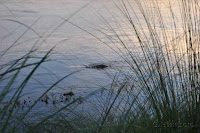Nepal is vastly underrated. This past year I took two trips, primarily for visa purposes, but both times I discovered amazing landscapes, gorgeous architecture and sculpture, fascinating history, and cool people.

I'm looking forward to visiting again some day, perhaps in winter just after the monsoon, to complement my summer and monsoon visits.
Bhaktapur hosts the third historical square in the Kathmandu valley, after Durbar Square in Kathmandu, and Patan's Durbar Square. Durbar Square in Bhaktapur has an amazing golden door into the king's palace.

In the photo of Vatsala Temple you can see two bells; the Taleju bell on the right was for prayers, and the "barking bell" (partly shown) on the left was erected to counteract a king's vision.

A walking tour around Bhaktapur gives a glimpse into more traditional Nepali life, from worship at the Mahakali Temple to red chilis drying on the roadside.


Apparently another Canadian was wandering the streets, because I ran into this boy with a flag pin in his ear. His friend got a pin from me.

Religious icons often have flowers on them, but the monsoon made some striking combinations. Halfway through my walking tour, and well into the afternoon, it started to rain, so I grabbed a bowl of juju dhau, and caught the bus back to Kathmandu.

The southeast side of Bhaktapur included Potter's Square, filled with drying clay pots, and surrounded by pottery wheels and shops.

This photo shows Bhairabnath Temple from Nyatapola Temple at Taumadhi Tole.


The next day I returned, and took a side trip to Changu Narayan, a temple complex with the most impressive single collection of religious carving: all outdoors! The most interesting were an idol of Vishnu riding his mountGaruda (also on the 10 rupee note), and Vishnu with seven of his ten incarnations represented as heads on one body. Although there's a high risk of getting rained on during the monsoon, it's also a wonderful time for photography, because of the explosion of growth and colour. Many things outdoors grow a green fuzz. Pack a rain jacket and stick your camera in a bag!

 A morning jungle walk didn't show many animals--lots of deer, supposedly a rhino who had just lay down in the tall grass--but plenty of fascinating sights nevertheless. The tall grass cut up the skin on my arms (long sleeves people!), and we saw tracks of wildcat, mongoose, rhino, and more deer. Claw marks on a tree from a tiger, a flying dung beetle (described as a "shit beetle" by my guide), and plenty of insects and flora, including mimosa, which curls up its leaves if touched. The coolest thing I found myself was this bubble-like fungus.
A morning jungle walk didn't show many animals--lots of deer, supposedly a rhino who had just lay down in the tall grass--but plenty of fascinating sights nevertheless. The tall grass cut up the skin on my arms (long sleeves people!), and we saw tracks of wildcat, mongoose, rhino, and more deer. Claw marks on a tree from a tiger, a flying dung beetle (described as a "shit beetle" by my guide), and plenty of insects and flora, including mimosa, which curls up its leaves if touched. The coolest thing I found myself was this bubble-like fungus.

 walked out to the elephant breeding centre, I passed through traditional villages where some teenage Nepali girls danced and posed for photos, and a buffalo showed far too much interest in me for my comfort. The elephant twins were the main attraction.
walked out to the elephant breeding centre, I passed through traditional villages where some teenage Nepali girls danced and posed for photos, and a buffalo showed far too much interest in me for my comfort. The elephant twins were the main attraction.

 Finally, some adventure on the way back to Kathmandu. A strike had been called, and only one bus was travelling that day. We kept taking back roads to avoid blockades, and one of the bus workers instructed us to say we were part of a group, and we had to catch a flight in Kathmandu. They also packed an extra 10 people onto the bus (no fare reduction of course), which meant most of the younger guys rode on the roof. The locals we passed found it hilarious. Anyway, great conversation with a Canadian and an Australian, Deanna and Ele.
Finally, some adventure on the way back to Kathmandu. A strike had been called, and only one bus was travelling that day. We kept taking back roads to avoid blockades, and one of the bus workers instructed us to say we were part of a group, and we had to catch a flight in Kathmandu. They also packed an extra 10 people onto the bus (no fare reduction of course), which meant most of the younger guys rode on the roof. The locals we passed found it hilarious. Anyway, great conversation with a Canadian and an Australian, Deanna and Ele.





















